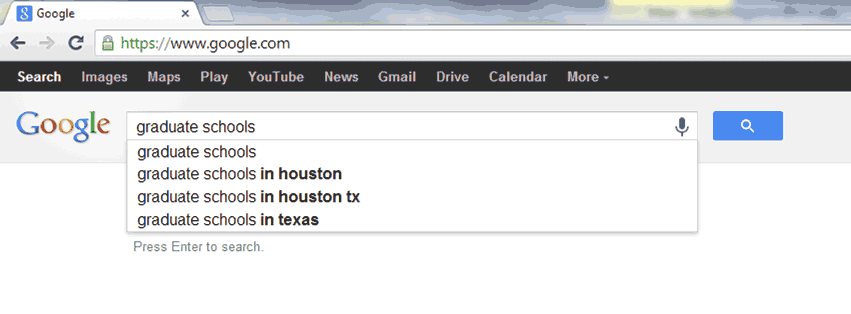Tapping into technology: Biomed Virtual Grad School Fair
When seeking graduate programs, there are so many avenues for information and advice that it can be overwhelming for potential students to figure out: What’s best for me and my goals?
It can be challenging to even know where to begin, but a good starting place tends to be graduate school fairs, where dozens of representatives gather in one place to provide information and answer questions.
However, many prospective students today turn to technology to find answers – search engines or social media platforms on their computers, tablets or smartphones.
Virtual grad school fair
Last year, Holly Wilbanks of Baylor College of Medicine’s Graduate School of Biomedical Sciences launched the premiere virtual grad school fair – an opportunity to effectively provide information about our graduate school to interested students, while giving them a way to avoid the financial obstacle of traveling.
Wilbanks learned about the potential to host a virtual recruitment fair while at a conference, and enlisted 21 schools from across the country to participate alongside the College.
The turnout exceeded expectations: Nearly 1,000 students from around the world attended last year’s fair, and some of those students began at Baylor this fall.
Now, Wilbanks is helping to plan the second Biomed Virtual Grad School Fair, taking place in two parts: Sept. 10 and Oct. 24. Admission to the fair is 100 percent free, and this year, at least 35 institutions total will be participating, including Baylor.
“The difference between our virtual grad school fair and an in-person event is that travel is eliminated, and this can be a huge barrier for students,” said Wilbanks, “This kind of virtual event creates ways to reach more students, and also to reach the ‘Internet generation.’”
Experience of attending the virtual event
Wilbanks said that the experience of the virtual event is “fast and furious” for both students and school representatives, because there are so many attendees who all bring lots of questions to be answered.
They have created a training session to establish best practices within chatrooms to ensure that it’s a helpful, but not overwhelming, experience. Moderators will be welcoming students, finding out what kinds of questions they have, and then designating them to specific representatives who will be best able to answer their questions.
The virtual fair provides opportunities to use chatrooms, private one-on-one messages between representatives and prospective students, and video chatting software. This year, many more institutions are planning to use video chatting as part of the virtual fair experience to add an element of a more personal, “face-to-face” connection.
Wilbanks said that it’s okay for students to attend even if they don’t have a list of questions ready.
“This is a great opportunity for prospective students who don’t really know where to start and don’t want to engage in conversations yet,” she said, “They can be an observer, viewing all of the chat history in a certain chatroom to get information, and then if they decide they have questions later, they can stay and chat.”
After the fair
Students provided feedback last year that they were able to get the same experience from the virtual fair as if they attended an in-person fair; they were able to get all of their questions answered in a one-on-one conversation and made contacts for follow-up questions later on.
After the fair is over, the communication isn’t over – Baylor is provided with a complete list of all students who were in attendance, so they can be contacted with admissions information, deadlines, and all other follow-up communications.
Did you attend last year’s fair? Share your experiences here.
Considering graduate school? Register now for the free Biomed Virtual Grad School Fair and contact Holly Wilbanks with any questions.
-By Jordan Magaziner



